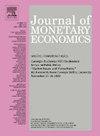(贸易)战争与和平:如何实施国际贸易制裁
IF 4.3
2区 经济学
Q1 BUSINESS, FINANCE
引用次数: 0
摘要
对俄罗斯实施贸易制裁的最具成本效益的方式是什么?我们建立了一个具有投入产出关系的国际贸易定量模型。制裁国在选择进口关税时,要同时实现本国收入最大化和俄罗斯收入最小化,并对这些目标赋予不同的权重。我们发现,首先,对于为制裁俄罗斯付出代价意愿较低的国家来说,最具成本效益的制裁措施是对所有俄罗斯产品征收约 20% 的关税。其次,如果各国愿意为俄罗斯福利每下降 1 美元至少支付 0.70 美元,那么对俄罗斯矿业和能源产品实施禁运就是最具成本效益的政策。本文章由计算机程序翻译,如有差异,请以英文原文为准。
(Trade) War and peace: How to impose international trade sanctions
What is the most cost-efficient way to impose trade sanctions against Russia? We build a quantitative model of international trade with input–output connections. Sanctioning countries choose import tariffs to simultaneously maximize their income and minimize Russia’s income, with different weights placed on these objectives. We find, first, that for countries with low willingness to pay for sanctions against Russia, the most cost-efficient sanction is an approximately 20% tariff on all Russian products. Second, if countries are willing to pay at least US$0.70 for each US$1 drop in Russian welfare, an embargo on Russia’s mining and energy products is the most cost-efficient policy.
求助全文
通过发布文献求助,成功后即可免费获取论文全文。
去求助
来源期刊

Journal of Monetary Economics
Multiple-
CiteScore
7.20
自引率
4.90%
发文量
90
审稿时长
74 days
期刊介绍:
The profession has witnessed over the past twenty years a remarkable expansion of research activities bearing on problems in the broader field of monetary economics. The strong interest in monetary analysis has been increasingly matched in recent years by the growing attention to the working and structure of financial institutions. The role of various institutional arrangements, the consequences of specific changes in banking structure and the welfare aspects of structural policies have attracted an increasing interest in the profession. There has also been a growing attention to the operation of credit markets and to various aspects in the behavior of rates of return on assets. The Journal of Monetary Economics provides a specialized forum for the publication of this research.
 求助内容:
求助内容: 应助结果提醒方式:
应助结果提醒方式:


